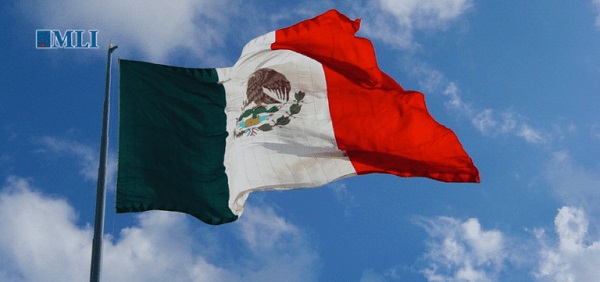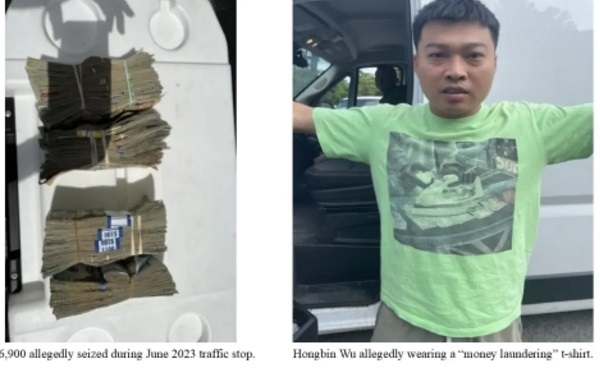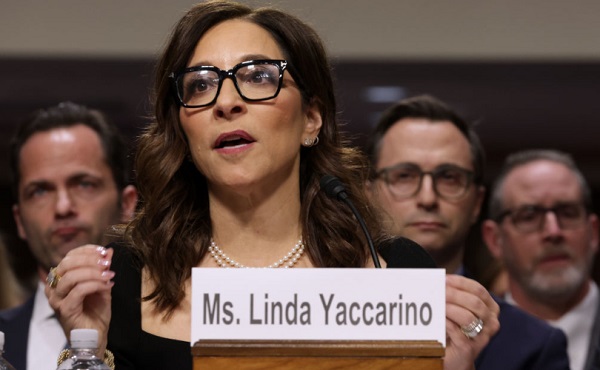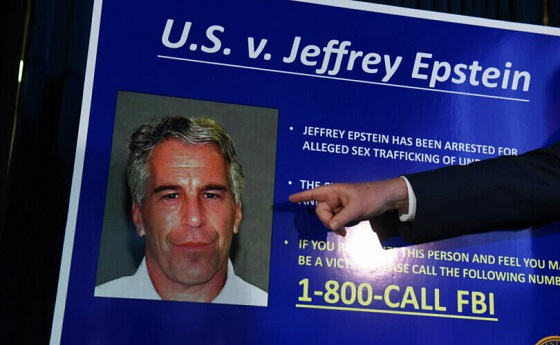Crime
Mexican cartels are a direct threat to Canada’s public safety, and the future of North American trade

From the Macdonald Laurier Institute
By Gary J. Hale for Inside Policy
RCMP raided a fentanyl ‘superlab’ in Falkland, BC, with ties to a transnational criminal network that spans from Mexico to China.
On October 31, residents of Falkland, BC, were readying their children for a night of Halloween fun. Little did they know that their “quaint, quiet, and low-key little village” was about to make national headlines for all the wrong reasons.
On that day, RCMP announced that it had raided a fentanyl “superlab” of scary proportions near Falkland – one that police called the “largest and most sophisticated” drug operation in Canada. Officers seized nearly half-a-billion-dollars’ worth of illicit materials, including 54 kilograms of finished fentanyl, 390 kilograms of methamphetamine, 35 kilograms of cocaine, 15 kilograms of MDMA, and six kilograms of cannabis” as well as AR-15-style guns, silencers, small explosive devices, body armour, and vast amounts of ammunition.
They also found massive quantities of “precursor chemicals” used to make the drugs. This strongly suggests that the superlab was tied into a transnational criminal network that spans from Mexico to China – one that uses North America’s transportation supply chains to spread its poisonous cargo across Canada and the United States.
The Canada-US-Mexico relationship is comprised of many interests, but the economic benefits of trade between the nations is one of the driving forces that keep these neighbours profitably engaged. The CUSMA trade agreement is the successor to NAFTA and is the strongest example globally of a successful economic co-operation treaty. It benefits all three signatories. This level of interdependence under CUSMA requires all parties to recognize their respective vulnerabilities and attempt to mitigate any threats, risks, or dangers to trade and to the overall relationship. What happens to one affects all the others.
The supply chain, and the transport infrastructure that supports it, affects the balance books of all three. While the supply chain is robust and currently experiences only occasional delays, the different types of transport that make up the supply chain – such as trucks, trains, and sea-going vessels – are extremely vulnerable to disruption or stoppages because of the unchecked violence and crime attributed to the activities of Mexican Transnational Criminal Organizations (TCOs). These cartels operate throughout Mexico, from the Pacific ports to the northern plains at the US-Mexico border.
The sophistication of the Falkland superlab strongly suggests connectivity to multi-national production, transportation, and distribution networks that likely include China (supply of raw products) and Mexico (clandestine laboratory expertise).
For most Canadians, Mexican cartels call to mind the stereotypical villains of TV and movie police dramas. But their power and influence is very real – as is the threat they pose to all three CUSMA nations.
Mexico’s cartels: a deadly and growing threat
Mexican cartels started as drug trafficking organizations (DTOs) in the 1960s. By the late 1990s they had evolved to become transnational enterprises as they expanded their business beyond locally produced drugs (originally marijuana and heroin) to include primarily Colombian cocaine that they transported through Mexico en route to the US and Canada.
Marijuana and the opium poppy are cultivated in Mexico and, in the case of weed, taken to market in raw form. While the cartels required some chemicals sourced from outside Mexico to extract opium from the poppy and convert it into heroin, the large-scale, multi-ton production of synthetic drugs like Methamphetamine and today Fentanyl expanded the demand for sources of precursor chemicals (where the chemical is slightly altered at the molecular level to become the drug) and essential chemicals (chemicals used to extract, process, or clean the drugs.)
The need to acquire cocaine and chemicals internationalized the cartels. Mexican TCO’s now operate on every continent. That presence involves all the critical stages of the criminal business cycle: production, transportation, distribution, and re-capitalization. Some of the money from drug proceeds flow south from Canada and the US back to Mexico to be retained as profits, while other funds are used to keep the enterprise well-funded and operational.
In Mexico, the scope of their activities is economy-wide; they now operate many lines of criminal business. Some directly affect Mexico’s economic security, such as petroleum theft, intellectual property theft (mainly pirated DVDs and CDs), adulterating drinking alcohol, and exploiting public utilities. Others are in “traditional” criminal markets, such as prostitution, extortion, kidnapping, weapons smuggling, migrant smuggling and human trafficking. Organized auto theft has also become another revenue stream.
Criminal Actors
The Cartel de Sinaloa (CDS or Sinaloa Cartel) and the Cartel Jalisco Nueva Generacion (CJNG) are the two principal TCO’s vying for territorial control of Mexico’s air, land, and maritime ports, as well as illegal crossing points. These points on the cartel map are known as “plazas,” and are often between formal ports of entry into the US. By controlling territories crucial for the inbound and outbound movement of drugs, precursors, people, and illegal proceeds, the cartels secretly transport illicit goods and people through commercial supply chains, thus subjecting the transportation segment of legitimate North American trade to the most risk.
That is giving the cartels the power to impair – and even control – the movement of Mexico’s legitimate trade. While largely kept out of the public domain, incidents of forced payment of criminal taxation fees, called “cuotas,” and other similar threats to international business operations are already occurring. For instance, cuotas are being imposed on the transnational business of exporting used cars from the US to Mexico. They’re also being forced on Mexican avocado and lime exporters before the cartels will allow their products to cross the border to the US and international markets. This has crippled that particular trade. Unfortunately, the Mexican government has been slow to react, and the extortion persists throughout Mexico. It is worth repeating – these entirely legitimate goods reach the market only after cartel conditions are met and bribes paid.
The free trade and soft border policies of the US of recent years have allowed cartel operatives to enter that country and work the drug trade with limited consequence. In May, the U.S. Drug Enforcement Administration (DEA) published the National Drug Threat Assessment 2024, where it reported that the Jalisco and Sinaloa cartels operate in all 50 US states and are engaged in armed violence in American cities as they fight for market shares of the sales of Methamphetamine, Fentanyl, and other drugs sourced from Mexico.
The DEA’s findings should sound alarms in Canada. Canada and the US have similar trade and immigration policies, which allow the Mexican cartels to easily enter and control the wholesale component of the drug trade. The long-term effects of the drug trade are the billions of dollars gained that allow for the corruption of government officials. Canada should be on guard: Mexican drug cartels in Canada could begin to not only kill ordinary Canadians by knowingly selling them deadly drugs like Fentanyl – their operatives can also embed themselves in Canadian society, as they have in the US, leading to ordinary citizens on Canadian streets being victimized by the armed violence cartels regularly use to assert their position and power.
Organized crime and Mexican governance
Canada faces these threats directly, but the indirect ones that the cartels present to Mexican governance are no less consequential to Canada in the long term – and likely sooner. Illicit agreements between corrupt Mexican government officials and the cartels assure that the crime organizations retain control of territory and have freedom to operate.
That threat is becoming increasingly existential. Cartel fighters are well disciplined, well equipped and strong enough to challenge Mexico’s military, currently the government’s main tool to fight them. Should the TCOs come to dominate Mexican society or gain decisive influence over government policy, Mexico’s government risks being declared a narco-democracy and the US may come to see the cartels as a threat to national security. That in turn could lead to a US military intervention in Mexico – not an outcome desired by either side.
While that scenario may be considered extreme, it is not as far from reality as many may think. While in many respects the US-Mexico trading relationship remains unchanged, the overall political context has become testy – and could be a real flashpoint for the incoming Trump administration.
Political developments in Mexico have played a role. After his election in 2018, former Mexican President Andrés Manuel López Obrador (commonly referred to his initials, AMLO) demonstrated a disdain for all things North American. This included frequent complaints of US interference or violation of Mexican sovereignty – complaints that were more about keeping Mexican government domestic actions out of the public eye. To retain a shroud of secrecy over government corruption, Mexico under Amlo started in 2022 to limit the activities and numbers of US federal law enforcement agencies operating there, particularly the FBI, DEA, ATF and ICE. These agencies formerly enjoyed a close relationship with the Mexican Federal Police – a force AMLO disbanded and replaced with the National Guard. The AMLO administration reduced the number of US assets and agents in Mexico, particularly singling out the DEA for the most punitive restrictions.
During his administration, AMLO placed the army and navy in charge of all ports of entry and gave them responsibility for all domestic public safety and security by subordinating the Guardia Nacional (GN), or National Guard, to the army. The GN, the only federal law enforcement agency, has been taken over by military officials who are sometimes corrupt and in league with the cartels.
Mexican President Claudia Sheinbaum, who took office in 2024, has continued AMLO’s organizational moves. Sheinbaum comes from the same political party and has so far extended carte blanche to the military, whose administration is opaque and now operates with impunity, under the guise of “national security” and “sovereignty” concerns.
It is expected that Sheinbaum will continue to shield American eyes from Mexico law enforcement and judicial affairs. The fear in the US law enforcement and national security community is that Sheinbaum may even declare DEA non grata, much as then Venezuelan President Hugo Chavez in 2005 and Bolivian President Evo Morales in 2008 did in their countries. Both were anti-American leftists of the same mindset as AMLO and Sheinbaum, who feared detection of their connections to the illegal drug trade.
Sheinbaum has publicly demonstrated disinterest in the consistent application of the rule of law against the TCOs by stating that she will continue the “hugs not bullets” (“abrazos, no balazos”) non-confrontational, non-interventional posture towards organized crime. Agreements with corrupt government officials will allow the cartels to expand their business and to operate with impunity. Through intimidation, bribery, and murder, the cartels affect decision making at the municipal, state, and federal levels of Mexican government. That leverage, while performed outside the public eye, has the potential to negatively affect supply and demand among the three countries at the very least, and at worst, to signal that cartels in Mexico are directly or indirectly involved in the formulation of government security, immigration, drug, and trade policy.
AMLO enacted constitutional changes that will provide Sheinbaum with the powers of a dictator, giving her administration unchecked control of the executive, legislative, and judicial branches of government. As a result, the judiciary in Mexico is in crisis mode with 8 of 11 Supreme Court Justices resigning in October 2024 to protest the unconstitutional disregard for due process that started with AMLO and continues with Sheinbaum thanks to a “voting for judges” law that she and AMLO have rammed into operation without debate. This development portends even more corruption.
Without the existence of an independent judicial system, these institutional changes could give pause to US and Canadian negotiators when it comes time to renew CUSMA in 2026.
Beyond 2025: Mexican organized crime as a threat to the US and Canada, and Greater North American implications
Most worrying, the cartels will be in a yet stronger position to affect and even dictate the pace and volume of legitimate trade between the US and Mexico under Sheinbaum. This makes Mexico the weakest link among the three CUSMA members.
The US and Canada should therefore be concerned about the strength and power of the cartels because the current trajectory could provide them a greater role in Mexico’s performance as a trade partner. Should this trend continue, the US would likely begin to see Mexico through the lens of a threat to critical components of its national security: 1) the public safety of US citizens being killed in epidemic proportions by the drugs produced by citizens of Mexico; 2) the negative impact or increased cost of commerce that supplies goods to the American market; and 3) the CUSMA relationship that sustains the economic strength of all three participating countries.
This worrisome evolution requires proactivity by Canada and the US to insist that Sheinbaum reverse the gains that the cartels have made to influence policy and erode the government’s monopoly on territorial control and the use of violence, and reverse Mexico’s limits on drug enforcement co-operation with what should be its partners to the north. Pressure should also be applied to demand a return to a drug policy model that includes international law enforcement co-operation and a continuation towards the transformation of the Mexican judicial system from a mixed inquisitorial or accusatorial system to an adversarial system that employs the use of juries, witness testimony, oral hearings and trials, and cross-examination of witnesses, as opposed to a system where cartel-influenced elections could dictate judicial outcomes.
The implications of the further development of a Mexico narco-democracy for US-Mexico-Canada relations would be devastating. Co-operation on public safety and security would cease completely, allowing the cartels to take full control of commercial supply lines, significantly reducing trade between the three nations – likely causing the CUSMA trade deal to fracture until governance returned to duly elected civilian officials.
Continental security and Canada’s contribution
The continued success of CUSMA lies with Mexico more than any other country. Should Mexico continue on its path to autocracy, it could upset the trade deal, crucial to the prosperity of all three countries. Canada is not immune from what on the surface may appear to be mostly bilateral, US-Mexico issues, because, regardless of the commodity – whether it’s consumables or manufactured items – the cartels are positioned and empowered to affect imports, exports, trade, and migration throughout North America.
For the foreseeable future, Mexico is not going to voluntarily change its security posture. This enables the cartels to remain persistent threats, especially to trade. Canada and the US need to continue to jointly insist that Mexico take a stronger stance against organized crime and that it take steps to strengthen the judiciary and the rule of law in that country.
Gary J. Hale served 31 years in the Drug Enforcement Administration (DEA), retiring as an executive-level intelligence analyst. In 2010, he was appointed as Drug Policy fellow and Mexico Studies Scholar at the James A. Baker III Institute for Public Policy at Rice University in Houston, Texas.
Crime
Sweeping Boston Indictment Points to Vast Chinese Narco-Smuggling and Illegal Alien Labor Plot via Mexican Border

 Sam Cooper
Sam Cooper
Case details a pipeline from China through Mexico, trapping trafficked illegal migrants as indentured workers in a sweeping drug network.
In a sweeping indictment that tears into an underworld of Chinese narco infiltration of North American cities — including the smuggling of impoverished Chinese nationals across the Mexican border to work as drug debt slaves in illegal drug houses — seven Chinese nationals living in Massachusetts stand accused of running a sprawling, multimillion-dollar marijuana trafficking and money laundering network across New England.
The backdrop of the human smuggling allegations stretches back to 2020, as an unprecedented wave of illegal Chinese migrants surged across the U.S. border with Mexico — a surge that peaked in 2024 under the Biden administration before the White House reversed course. This explosive migration trend became a flashpoint in heated U.S. election debates, fueling concerns over border security and transnational organized crime.
Six of the accused, including alleged ringleader Jianxiong Chen of Braintree, were arrested this week in coordinated FBI raids across Massachusetts. The border exploitation schemes match exactly with decades-long human smuggling and Chinese Triad criminal pipelines into America reported by The Bureau last summer, based on leaked intelligence documents filed by a Canadian immigration official in 1993. A seventh suspect in the new U.S. indictment, Yanrong Zhu, remains a fugitive and is believed to be moving between Greenfield, Massachusetts, and Brooklyn, New York.
The case paints a striking portrait of China-based criminal organizations operating behind the quiet facades of upscale American suburban properties. Prosecutors allege the defendants owned or partnered with a network of sophisticated indoor grow houses hidden inside single-family residences in Massachusetts, Maine, and beyond, producing kilogram-scale shipments of marijuana. According to court documents, the marijuana was sold in bulk to distributors across the Northeast, and the profits — amounting to millions — were funneled into luxury real estate, cars, jewelry, and further expansion of their illicit operations.
“During a search of [ringleader Chen’s] home in October 2024, over $270,000 in cash was allegedly recovered from the house and from a Porsche in the driveway,” the indictment alleges, “as well as several Chinese passports and other identification documents inside a safe.”
According to the indictment, Chen’s cell phone data confirmed his personal role in orchestrating smuggling logistics and controlling workers. Additional searches of homes where co-defendants lived yielded over 109 kilograms of marijuana, nearly $200,000 in cash, and luxury items including a $65,000 gold Rolex with the price tag still attached.
A photo from the indictment, humorously but damningly, shows alleged ring member Hongbin Wu, 35, wearing a green “money laundering” T-shirt printed with an image of a hot iron pressing U.S. dollar bills on an ironing board — a snapshot that encapsulates the brazenness of the alleged scheme.
Key to FBI allegations of stunning sophistication tying together Chinese narcos along the U.S. East Coast with bases in mainland China is a document allegedly shared among the conspirators.
“The grow house operators maintained contact with each other through a list of marijuana cultivators and distributors from or with ties to China in the region called the ‘East Coast Contact List,’” the indictment alleges.
Investigators say the conspiracy reveals a human smuggling component directly tied to China’s underground migration and debt bondage networks, mirroring exactly the historic intelligence from Canadian and U.S. Homeland Security documents reported by The Bureau last summer.
The alleged leader, 39-year-old Jianxiong Chen, is charged with paying to smuggle Chinese nationals across the Mexican border, then forcing them to work in grow houses while withholding their passports until they repaid enormous smuggling debts.
“Data extracted from Chen’s cell phone allegedly revealed that he helped smuggle Chinese nationals into the United States — putting the aliens to work at one of the grow houses he controlled,” U.S. filings say.
“This case pulls back the curtain on a sprawling criminal enterprise that exploited our immigration system and our communities for personal gain,” said U.S. Attorney Leah Foley. “These defendants allegedly turned quiet homes across the Northeast into hubs for a criminal enterprise — building a multi-million-dollar black-market operation off the backs of an illegal workforce and using our neighborhoods as cover.”
The arrests come amid a surge of Chinese migrants entering the U.S. through Mexico, part of a pattern previously exposed in Canadian diplomatic and intelligence reporting. In 1993, a confidential Canadian government study, “Passports of Convenience,” warned that Chinese government officials, in collusion with Triads and corrupt Latin American partners, were driving a multi-billion-dollar human smuggling business. That report predicted that tens of thousands of migrants from coastal Fujian province would flood North America, empowered by Beijing’s tacit support and organized crime’s global reach.
It also warned that mass migration from China in the 1990s came during a time of political upheaval, a trend that has apparently re-emerged while President Xi Jinping’s economic and political guidance has been increasingly questioned among mainland citizens, particularly since the Covid-19 pandemic crisis and lockdowns inside China.
The 1993 report, obtained and analyzed exclusively by The Bureau, described how the Triads — particularly those connected with Chinese Communist networks in Fujian — would leverage human smuggling to extend their influence into American cities. The migrants, often saddled with debts of $50,000 or more, became trapped in forced labor, prostitution, or drug networks, coerced to repay their passage fees.
“Alien smuggling is closely linked to narcotics smuggling; many of the persons smuggled in have to resort to prostitution or drug dealing to pay the smugglers,” the 1993 Canadian immigration report says.

Citing legal filings in one U.S. Homeland Security case, it says a Triad member who reportedly smuggled 150 Fujianese migrants into New York stated that if fees aren’t paid “the victims are often tortured until the money is paid.”
Supporting these early warnings, a 1995 U.S. Department of Justice report echoed the Canadian findings, stating that “up to 100,000 Chinese aliens are smuggled into the United States each year,” with 85 percent originating from Fujian. The DOJ report also cited allegations of “negotiations between the Sun Yee On Triad and the Mainland Chinese Government,” suggesting that smuggling and criminal infiltration were tolerated — if not orchestrated — to extend China’s economic and political influence abroad.
That report added American investigators and immigration officials concluded it was nearly impossible to counter waves of illegal immigration from China with deportation orders, and the government should focus on “the larger menace working its way into U.S. cities: Chinese transnational criminal organizations.”
“To combat the growing threat of Asian organized crime in the West,” it says, “law enforcement officials must tackle this new global problem through an understanding of the Triad system and the nature of its threat to Western countries.”
In New England, the Braintree indictment shows how those old predictions have not only materialized but scaled up.
These networks operate by embedding Chinese nationals into illicit industries in North America, from black-market cannabis cultivation to high-end money laundering. Once inside, they channel profits back through complex underground banking channels that tie the North American drug economy to China’s export-driven cash flows and, ultimately, to powerful actors in Beijing.
In recent years, Maine has emerged as a strategic hotspot for illicit Chinese-controlled marijuana operations. As The Bureau has reported, the state’s vast rural areas, lax local oversight, and proximity to East Coast urban markets have made it a favored location for covert grow houses.
Crime
Tucker Carlson: US intelligence is shielding Epstein network, not President Trump

From LifeSiteNews
By Robert Jones
Pam Bondi’s shifting story and Trump’s dismissal of Epstein questions have reignited scrutiny over the sealed files.
Tucker Carlson is raising new concerns about a possible intelligence cover-up in the Jeffrey Epstein case—this time implicating U.S. and Israeli agencies, as well as Trump ally and former Florida Attorney General Pam Bondi.
During a recent broadcast, Carlson discussed U.S. Attorney General Bondi’s refusal to release sealed Epstein files, along with the FBI and DOJ announcement that Epstein did not have a client list and did indeed kill himself.
Carlson offered two theories for Bondi’s words. The first: “Trump is involved—that Trump is on the list, that they’ve got a tape of Trump doing something awful.”
But Carlson quickly dismissed that idea, noting he’s spoken to Trump about Epstein and believes he wasn’t part of “creepy” activities. He also pointed out that the Biden administration holds the evidence and would likely have acted if there were grounds.
10 Shocking Stories the Media Buried Today
#10 – Tucker Carlson has two theories why Pam Bondi won’t release the Epstein Files.
Theory #1: “Trump is involved.”
But Tucker thinks this explanation is not very likely.
That brings us to Theory #2, which is that Tucker believes… pic.twitter.com/Wy8l5NWQvZ
— The Vigilant Fox 🦊 (@VigilantFox) July 8, 2025
Carlson’s second theory: the intelligence services are “at the very center of this story” and are being protected. His guest, Saagar Enjeti, agreed. “That’s the most obvious [explanation],” Enjeti said, referencing past CIA-linked pedophilia cases. He noted the agency had avoided prosecutions for fear suspects would reveal “sources and methods” in court.
The exchange aired as critics accused Bondi of shifting her account of what’s in the files. She previously referenced “tens of thousands of videos of Epstein with children,” but later claimed they were videos of child pornography downloaded by Epstein. Observers say that revision changes the legal and narrative stakes—and raises questions about credibility.
#9 – Pam Bondi changes the story on the “tens of thousands of videos of Epstein WITH children.”
BEFORE: Tens of thousands of videos of Epstein WITH children.
AFTER: Tens of thousands of videos of child p*rn were DOWNLOADED by Jeffrey Epstein.
Credit: @Ultrafrog17 pic.twitter.com/v5I2uulyzA
— The Vigilant Fox 🦊 (@VigilantFox) July 8, 2025
Donald Trump also appeared impatient with the matter. “Are you still talking about Jeffrey Epstein? That is unbelievable,” he said in a video beside Bondi. This clip sparked backlash from longtime Trump supporters, including former Trump advisor Elon Musk, who reposted critical commentary on Trump and Bondi’s comments on X:
Musk previously alleged that Trump was himself implicated in the Epstein files. Although he retracted and apologized for this, he recently suggested that Steve Bannon was also implicated.
However, Carlson’s guest suggested that Bondi’s comments had another purpose. “The lie is a signal to everybody else involved,” he said. “The lie is not for you and me. The lie is for those implicated to say, ‘No matter what, we will protect you.’”
#7 – Guest leaves Tucker Carlson speechless with an interesting theory about the Epstein File cover-up.
“The lie is a signal to everybody else involved in the scheme that to the ultimate ends, the United States government will go to protect all of you.”
“The lie is not for you… pic.twitter.com/DWm3VwBmwF
— The Vigilant Fox 🦊 (@VigilantFox) July 8, 2025
The files in question remain sealed. It is unclear whether further revelations about Epstein will come to light, but Trump’s comments are not going to make the issue go away.
-

 Also Interesting2 days ago
Also Interesting2 days ago9 Things You Should Know About PK/PD in Drug Research
-

 Business2 days ago
Business2 days agoWEF-linked Linda Yaccarino to step down as CEO of X
-

 Business2 days ago
Business2 days ago‘Experts’ Warned Free Markets Would Ruin Argentina — Looks Like They Were Dead Wrong
-

 Business2 days ago
Business2 days agoCannabis Legalization Is Starting to Look Like a Really Dumb Idea
-

 Bruce Dowbiggin1 day ago
Bruce Dowbiggin1 day agoThe Covid 19 Disaster: When Do We Get The Apologies?
-

 Media2 days ago
Media2 days agoCBC journalist quits, accuses outlet of anti-Conservative bias and censorship
-

 Business1 day ago
Business1 day agoCarney government should recognize that private sector drives Canada’s economy
-

 Automotive2 days ago
Automotive2 days agoAmerica’s EV Industry Must Now Compete On A Level Playing Field





